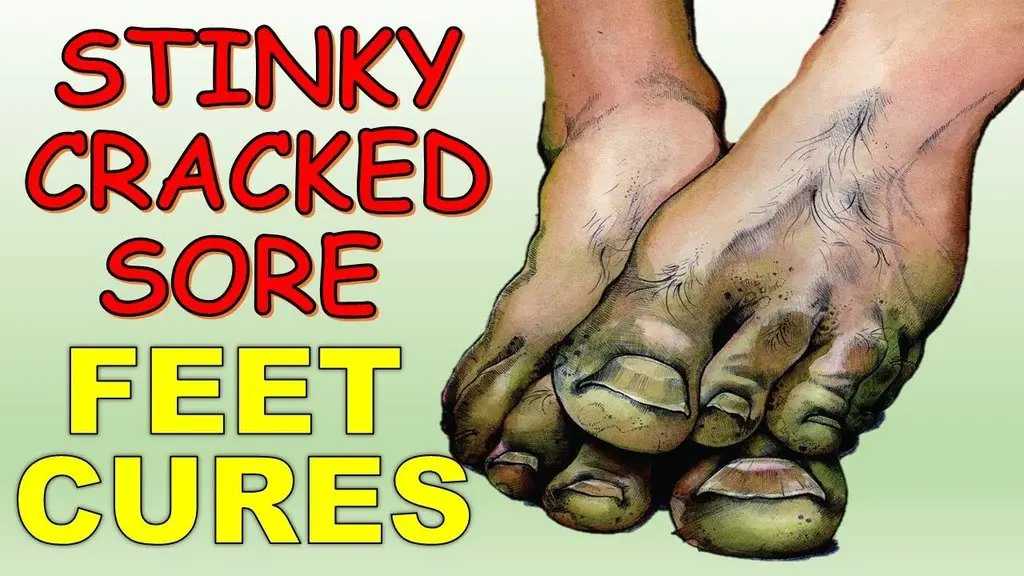You spend up to 80 percent of your waking hours on your feet, and each day your feet absorb thousands of kilograms of accumulated pressure. So it’s no wonder that, from time to time, your feet end up in pain, or cracked, dry or stinky.
Virtually anything can cause your feet to take on an unsightly appearance while causing pain and soreness, including shoes that don’t fit, diseases like arthritis and diabetes, and poor circulation. Here’s what you can do for sore, cracked, and stinky feet.
For Sore Feet
1. Boost Circulation
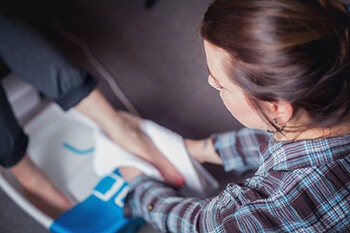

For a refreshing and stimulating treat for the feet, fill one basin with cold water and another with water as hot as you can comfortably stand. Sit in a comfortable chair, and place your feet in the cold water. After 5 minutes, switch to the hot water.
Repeat. This “hydromassage” alternately dilates and constricts blood vessels in your feet, boosting circulation.
2. Tennis Ball or Rolling Pin to Rub Out the Pain


In health food stores, you can buy a roller specially designed to massage the soles of the feet. Or you can simply roll your bare foot over a tennis ball, golf ball, or rolling pin for several minutes.
You can also massage your feet by hand with a homemade oil made from 3 drops of clove oil and 3 tablespoons of sesame oil.
3. Pencil Pick-Up
Scatter a few pencils on the floor, and pick them up with your toes. This little exercise helps relieve foot ache.
4. Stretch the Toes
Wrap a thick rubber band around all the toes on one of your feet. Then spread your toes and hold the stretch for five seconds.
Repeat this movement 10 times to relieve shoe-bound feet.
5. Tend to the Tissue
Heel pain, especially in the morning, can be a sign of plantar fasciitis, an inflammation of the tough band of tissue that connects your heel bone to the base of your toes. To get relief, stretch the Achilles tendon.
To start, stand about one metre from a wall. Then place your hands on the wall, and move your right leg forward, knee bent. Keep your left leg straight, with your heel on the floor.
You should feel a gentle stretch in your heel and foot arch. Hold for 10 seconds, then switch sides and repeat.
6. Heal the Heel
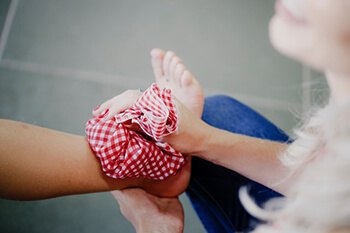

Apply an ice pack to your sore heel for about 20 minutes three times a day. Ice can be used as “cold therapy”, which works by reducing blood flow to a particular area.
This can significantly reduce inflammation and swelling that causes pain, especially around a joint or a tendon. It can temporarily reduce nerve activity, which can also relieve pain.
7. Make a foot bath
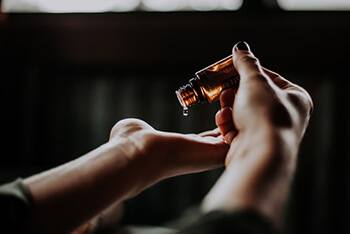

If your feet aren’t in particular pain, but they’re tired and achy, try pampering them with an at-home spa bath. Fill a foot bath with hot water, add 2 drops peppermint oil, 4 drops of eucalyptus, 4 drops of rosemary oil, and soak for 10 minutes.
Another soothing solution to add to your foot bath is a strong cup of peppermint tea, cooled to the perfect foot-dipping temperature.
For Cracked Feet
1. Coconut oil
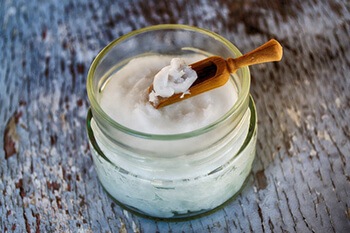

Massage a spoonful of coconut oil on each cracked foot and cover with socks before bed. In the morning, your problem areas should be smoother and softer.
Repeat as needed each night until cracked heels are better. Coconut oil is a natural sanitizer and helps to kill germs that could lead to infection.
2. Honey
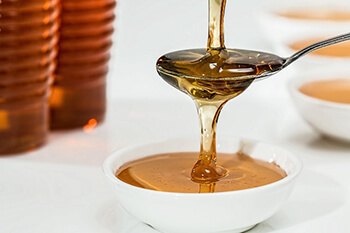

Add a cup of honey to a gallon of warm water. Then pour this honey water mixture into a bucket or large bowl wide enough to fit both of your feet.
Sit back, relax, and soak your feet for 20 to 30 minutes and let the ingredients get to work. The honey helps to moisturize and cleanse cracked feet while keeping germs at bay that could lead to infection.
3. Epsom Salt
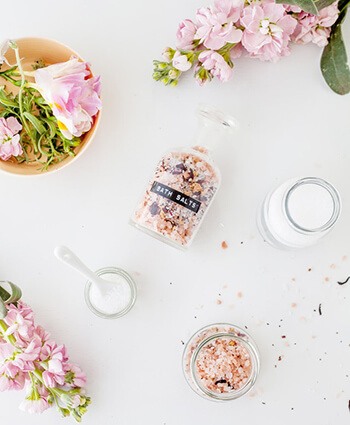

Add a third of a cup of Epsom salt to a bucket or large bowl wide enough to fit both feet. Then fill the bucket with warm water and let your feet soak for 20 to 30 minutes.
The Epsom salt helps to gently exfoliate the feet. When you’re finished, take some time to rub your feet with a light oil such as sesame oil or jojoba oil to keep them moisturized.
4. Pumice Stone
If in doubt, a pumice stone always does the job when it comes to dry, cracked feet. To start, soak your feet in warm water until they’re looking and feeling slightly softer.
Then use a natural pumice stone to slough off dead skin cells. Rub your feet with a light oil to finish, which will help to keep them moisturized.
5. Avocado oil
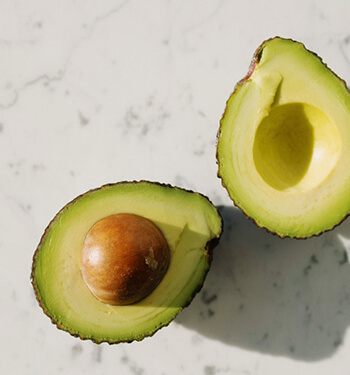

Avocado oil is a natural skin soother in a bottle. It’s an excellent remedy for cuts, scrapes, and cracked skin, thanks to its ability to kill germs and heal and moisturize skin.
Rub a teaspoon of avocado oil straight onto your feet before bedtime. Cover your feet with socks and wake up in the morning to soft heels. Repeat each night until skin is healed.
6. Banana and Coconut Mask
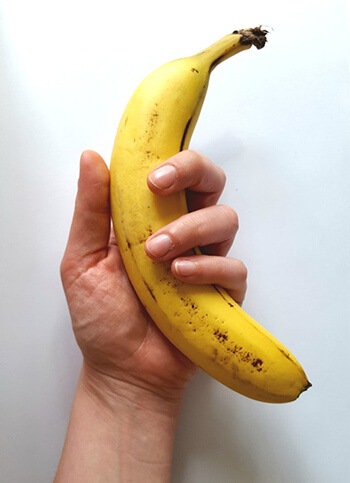

Mash a banana and 2 to 3 tablespoons of coconut oil. Apply this mixture to your cracked heels and let sit for 20 to 30 minutes.
Follow this up by washing your feet in a warm bath with no soap, then pat dry. The banana and coconut oil are loaded with natural enzymes that help to encourage cell turnover and moisturize skin.
7. Moisturizing Foot Bath
Add a third of a cup of Epsom salt to a bucket or large bowl, wide enough to fit both feet, and fill with warm water. Let your feet soak for up to half an hour, then follow up with coconut oil or your favourite carrier oil to lock in moisture.
8. Wool Socks
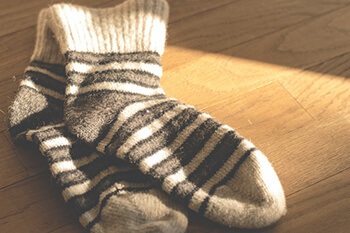

One of the biggest culprits of cracked feet is the loss of moisture. That’s why it’s a good idea to wear wool socks to trap your body heat in the feet.
This will help to prevent loss of moisture. You probably notice that your cracked feet go away in the winter, especially if you make sure to wear boots with socks, or even just socks around your house to keep your feet warm.
9. Shea Butter
Organic shea butter is a rich emollient packed full of nutrients, such as vitamins A, D, E, and F, as well as antioxidants and essential fatty acids. All of these combined can help combat dry skin, amongst their many other skin-beneficial properties.
A little goes a long way with shea butter. You can soak your feet in a bucket or large bowl and fill with warm water and 1 tablespoon of shea butter for 15 minutes. Or you could massage feet with 1 to 2 tablespoons of shea butter and cover your feet with socks overnight.
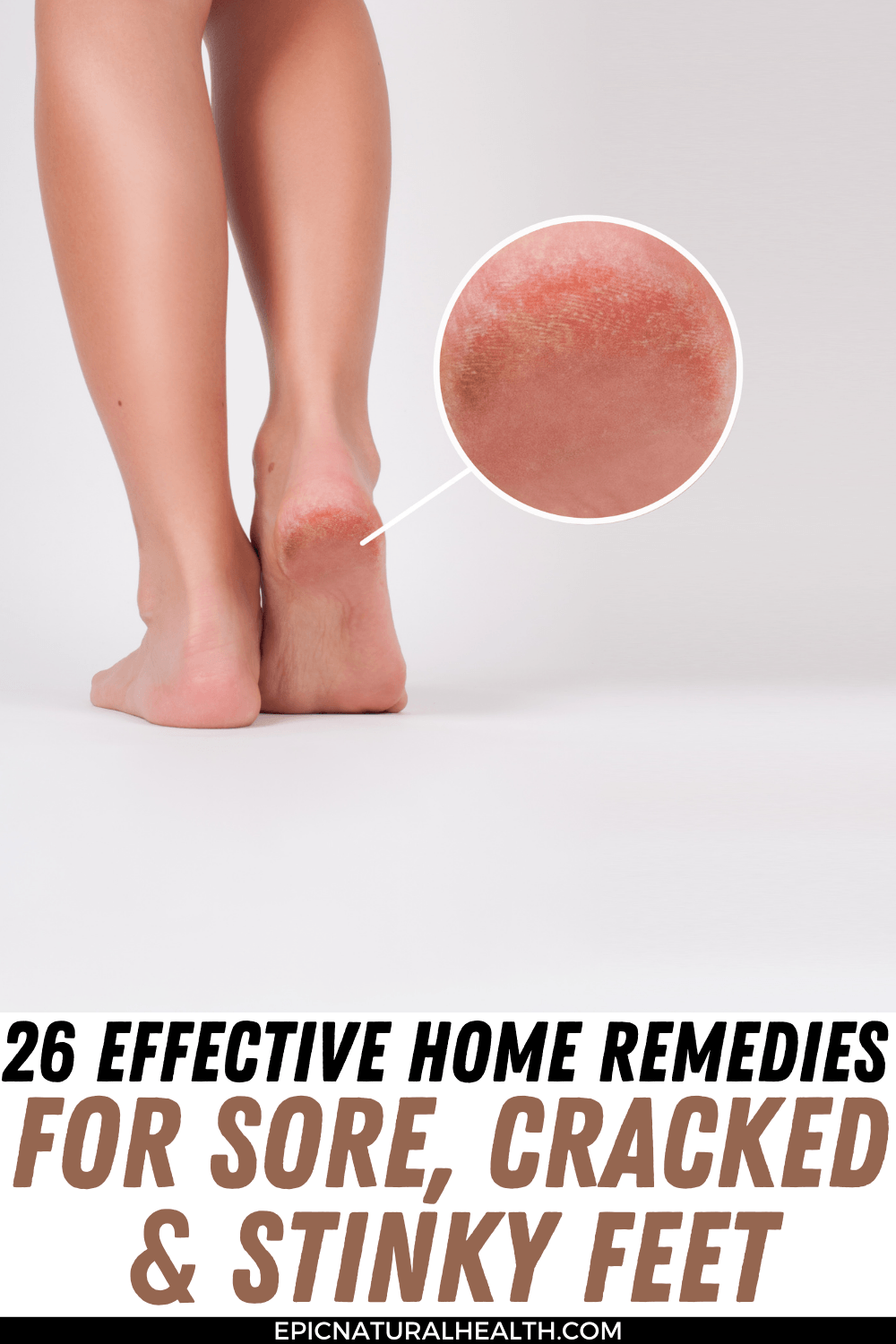

For Stinky Feet
1. Soak in a black tea foot bath


Soaking feet in tea can help dry them out so they’re not perspiring as much. That's because the tannic acids in black tea kill odour-causing bacteria.
To make a foot bath, boil two tea bags in a pint of water for 15 minutes. Remove the bags and dilute the tea with two quarts of water.
Let the mixture cool, then soak your feet for 15 to 30 minutes. Repeat daily until odour is gone.
2. Try an antibiotic ointment
Sweat, on its own, doesn't have an odour. It’s the bacteria that makes it smell.
Bacteria likes moisture. If you can get rid of the moisture and minimize bacteria, that’s how you mitigate the smell.
To do this, before you go to bed, rub your feet and nails with a thin coating of antibacterial ointment, put on some socks, and get some rest. In the morning, the bacteria will be gone, and with it, likely your foot odour problems.
3. Use a fragrant foot rub
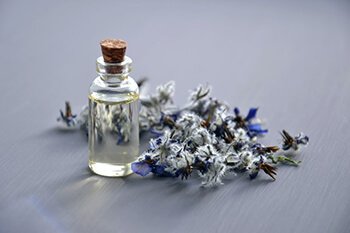

Lavender oil not only smells good, but it helps kill bacteria as well. Rub a few drops on your feet and massage it in before you go to bed. Cover your feet with socks for the most benefits.
4. Add more zinc to your diet
Some experts say that adding zinc to your diet can help eliminate foot odour. Top sources of this mineral include seafood, beef, spinach, beans, oatmeal, fortified breakfast cereals, mushrooms, almonds, and cashews.
One study found that 70 percent of participants eliminated foot odour with the help of a zinc solution.
5. Neutralize odour with vinegar


Soak your feet in a solution of about a third of a cup of apple cider vinegar to a foot basin full of warm or cool water. Although the evidence isn't ironclad that this solution will banish foot odour, one study suggests that apple cider vinegar has the antimicrobial potential to help kill bacteria and neutralize the odour.
6. Add a dusting of corn starch
Corn starch absorbs sweat, which keeps your feet feeling fresh. Once or twice a day, sprinkle the starch liberally on your feet before putting on your socks.
7. Make a minty scrub
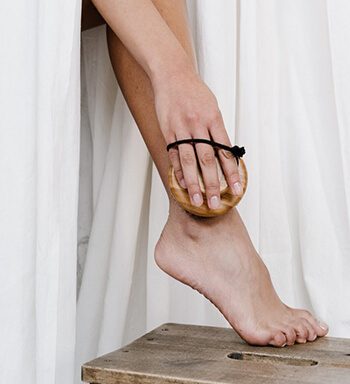

Peppermint cools and deodorizes the skin, while granulated sugar buffs away dead skin cells. To make this perfect odour-fighting scrub, combine 1 tablespoon of oatmeal with 1 tablespoon of cornmeal, 1 tablespoon of sugar, and 2 teaspoons dried peppermint in a bowl.
Add 1 tablespoon of natural yogurt, the juice from one lemon, and 5 drops of peppermint essential oil. Mix the whole thing together to form a grainy paste. Then massage the mixture into your feet and leave it to sit for 5 minutes before washing off.
8. Epsom salt bath
Epsom salts have many uses, including controlling bacteria – so they’re not just good for treating dry feet. To make a foot soak, mix 2 cups of Epsom salts with 1 to 2 gallons of warm water in a bucket or basin. Soak your feet for 15 minutes, twice a day.
9. Create a refreshing deodorizing spray
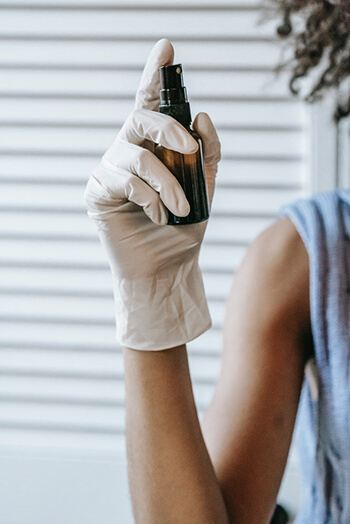

Research shows that sage has antibacterial and antifungal properties that will help reduce odour. Pour 4 ounces of boiling water over 2 tablespoons of dried sage, then cover and steep for 15 minutes, before straining and leaving to cool.
Add 4 tablespoons of witch hazel and 10 drops lavender essential oil to the solution, then carefully pour the whole thing into a 4-ounce spray bottle and refrigerate. Shake well before using, then spritz on your feet after bathing or anytime you need a pick-me-up. Be sure to use the solution within 10 days.
10. Wear moisture-wicking socks
Just as wearing normal socks prevents dryness, wearing moisture-wicking socks prevents excess sweating. The best of these socks are made of synthetic materials that help transfer moisture from the foot to the sock's outer layers to keep feet dry.
If your feet perspire a lot, it’s best to altogether avoid wearing nylon socks and shoes that aren't made of natural materials.
Conclusion
If your feet are looking or feeling worse for wear for any reason, you can easily bring them back to their best with one of several home remedies. Oftentimes, you don’t need to spend a whole lot of money on commercial products when you could enjoy the same benefits from the items in your kitchen and bathroom cupboards.
Which of these remedies works best for you? Or do you swear by a remedy that isn’t included in this video? Let us know in the comments below.

